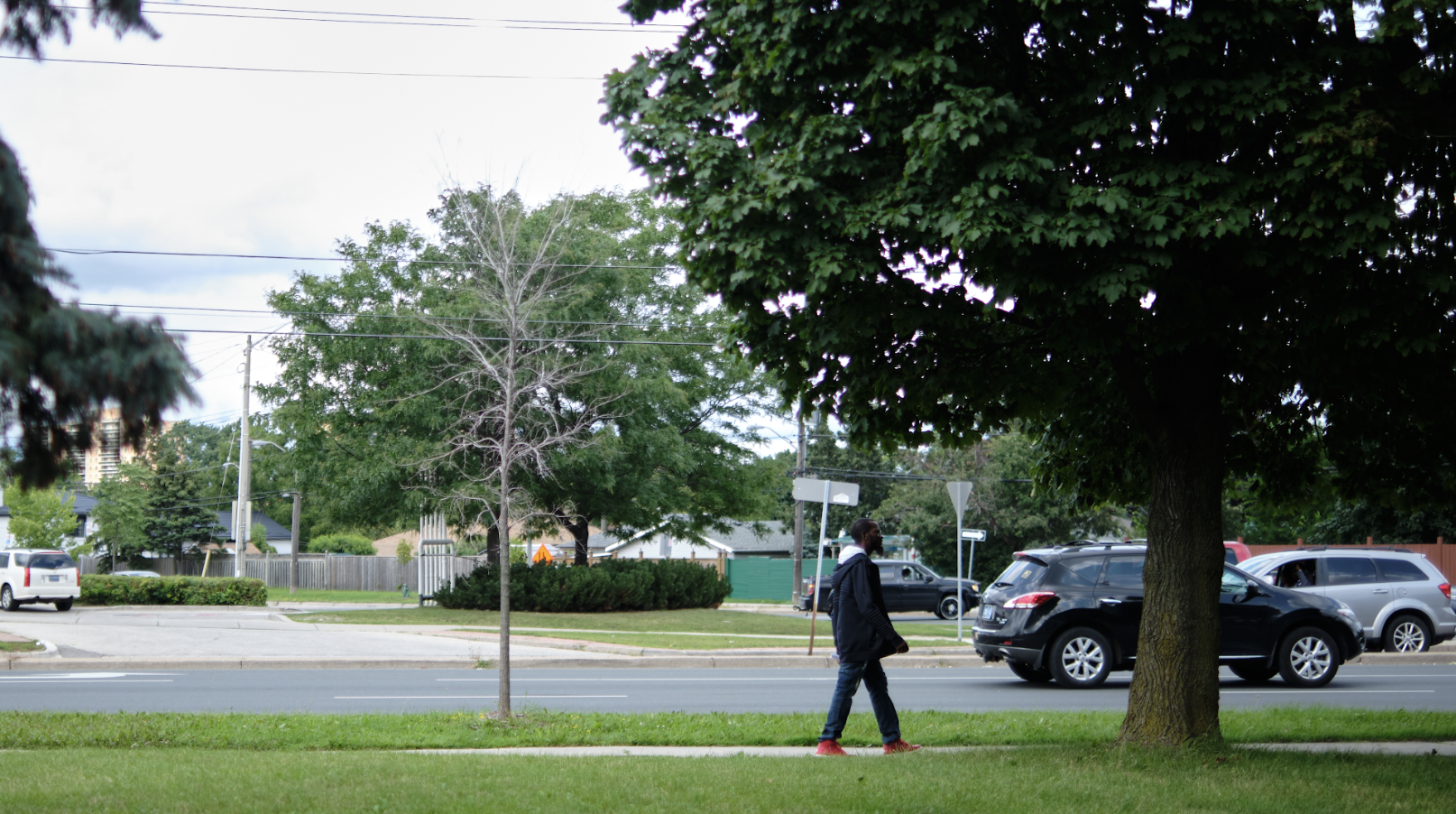Residents value the convenience of walkable neighbourhoods and the personal and community benefits of walking

The grocery stores, the shopping centre or a coffee shop or restaurants. If I want to dine-in with my friends, it's easy and close. Even it's easy to walk.
I can take a stroll at the park in the daytime, walk through my neighbourhood in the daytime like kids will be playing outside so that would, seeing other kids outside playing ball and like people walking out will make me feel safe cause I'm not alone.
Despite preconceptions about walking and walkability in suburban contexts, walking played an important role in many respondents’ local priorities. About 25% of residents typically walked to get around their neighbourhoods, and this group tended to have middle to lower incomes. Walking was linked in our survey with better self-reported mental health and with a reduced likelihood of reporting feeling “a little unsafe” in the neighbourhood compared to drivers. Interviewees discussed how walkability can enhance a sense of safety, particularly if others are out in the streets as well. Part of the reason for this disconnect between our respondents’ experience and standard preconceptions about suburban areas is that our respondents rarely defined their communities in reference to downtown Toronto. More commonly, they would use outer suburban communities, where many of their friends and family resided, as points of reference. In this comparison, it makes sense to perceive Toronto’s inner suburbs as decidedly more “urban,” not only in terms of walkability, but as we see below, in terms of access to amenities and services.
The benefits of walking were a common theme among interviewees. Some commented on the convenience of walkable neighbourhoods. Beyond convenience and physical exercise, several interviewees noted psychological benefits to walking, citing access to nature and a deeper connection to the surrounding environment. Nevertheless, some respondents noted significant barriers to walking in their neighbourhoods, often by way of pedestrian safety or poor upkeep of walking paths.
In sum, transit and mobility are central to our respondents’ experience of their neighbourhoods. They value shorter commutes and transit access, and see the personal and community benefits of walking and walkability. While many respondents take pride in the convenient access their neighbourhoods give them to nearby local amenities and other parts of the city, they also note various barriers to fully realizing their neighbourhoods’ potential, most notably the inconvenience and overcrowding of public transit, pedestrian safety, and road and trail maintenance.

I get fresh air, you know. I see animals that I normally don’t see. There’s deers there, hawks…whenever I need to calm my mind I just – it’s like meditation, it’s like therapy, you know, I just go walk for, go for a walk or I go for a run and it’s good for exercise.
Even if it’s like one foot of grass you feel scared to walk on the grass.




